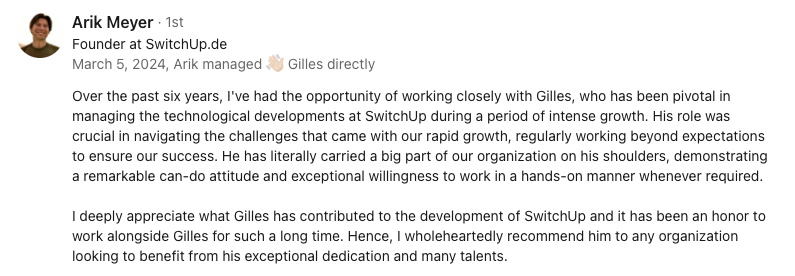Abstract:
Technology and engineering organizations face significant threats from ransomware attacks, highlighting the need for proactive cybersecurity strategies. Ransomware resilience involves creating a culture of cybersecurity awareness and deploying advanced security technologies. Layered security measures, including email and web filtering, network segmentation, and advanced technologies like AI and machine learning, are crucial for ransomware protection. In the event of an attack, rapid ransomware mitigation is essential, involving measures such as isolating infected systems, negotiating with attackers, and leveraging cybersecurity professionals. Technology and engineering leaders, such as CTOs and Directors of Engineering, bear the responsibility for implementing these strategies to safeguard their organizations from ransomware attacks.
Ransomware Resilience, Protection, and Mitigation: A Comprehensive Cybersecurity Strategy for Technology and Engineering LeadersRansomware Resilience: Building a Robust Cybersecurity Infrastructure
In the contemporary digital landscape, ransomware attacks pose a significant threat to technology and engineering organizations. These attacks, characterized by the encryption and holding of data hostage in exchange for a ransom, necessitate a proactive approach to cybersecurity. Ransomware resilience involves building a robust infrastructure that can withstand and rapidly recover from such attacks. This resilience is underpinned by two key pillars: a culture of cybersecurity awareness and the deployment of cutting-edge security technologies.
The culture of cybersecurity awareness involves fostering a deep understanding of the threat posed by ransomware among all employees. This education should cover best practices such as regular software updates, the use of strong and unique passwords, and the importance of vigilance against phishing attempts. The deployment of security technologies, on the other hand, involves implementing advanced solutions like intrusion detection systems, firewalls, and endpoint detection and response tools. These technologies can help identify and neutralize ransomware attacks in their early stages, thereby minimizing the potential damage.
Ransomware Protection: Layered Security for Maximum Protection
While ransomware resilience is crucial, it is equally important to implement robust ransomware protection measures. A layered security approach, which involves the deployment of multiple security measures in a strategic manner, can provide maximum protection against ransomware attacks. This approach can include measures such as email filtering to block phishing attempts, web filtering to prevent access to malicious websites, and network segmentation to limit the spread of ransomware within the network.
Additionally, ransomware protection can also involve the use of advanced security solutions like artificial intelligence and machine learning. These technologies can help identify patterns and behaviors associated with ransomware attacks, thereby enabling the proactive identification and neutralization of threats. Furthermore, the use of data backups and disaster recovery plans can ensure that organizations can quickly recover from ransomware attacks, thereby minimizing the impact of these attacks.
Ransomware Mitigation: Rapid Response and Recovery
Despite the best efforts to prevent ransomware attacks, they can still occur. In such cases, ransomware mitigation becomes crucial. This involves a swift and effective response to the attack, aimed at minimizing the damage and facilitating a rapid recovery. Ransomware mitigation can involve measures such as isolating infected systems to prevent the spread of the ransomware, negotiating with the attackers to reduce the ransom demand, and restoring data from backups.
Moreover, ransomware mitigation can also involve the use of cybersecurity professionals who specialize in ransomware attacks. These professionals can provide expert guidance and support throughout the mitigation process, thereby ensuring a swift and effective response. Furthermore, the implementation of a comprehensive incident response plan can ensure that all stakeholders know their roles and responsibilities in the event of a ransomware attack, thereby enabling a rapid and effective response.
The Role of CTOs, Directors of Technologies, and Directors of Engineering
The responsibility for ransomware resilience, protection, and mitigation lies with the technology and engineering leaders, including CTOs, Directors of Technologies, and Directors of Engineering. These leaders play a crucial role in ensuring the deployment of robust cybersecurity measures, fostering a culture of cybersecurity awareness, and facilitating a rapid response to ransomware attacks. By doing so, they can help protect their organizations from the devastating impact of ransomware attacks, thereby ensuring the continuity of operations and preserving digital trust.
In conclusion, ransomware resilience, protection, and mitigation are critical components of a comprehensive cybersecurity strategy for technology and engineering organizations. By building a robust infrastructure, implementing layered security measures, and facilitating a rapid response to ransomware attacks, organizations can protect themselves from the devastating impact of these attacks. The role of technology and engineering leaders in this process is crucial, as they are responsible for ensuring the deployment of robust cybersecurity measures and fostering a culture of cybersecurity awareness.
You might be interested by these articles:
- AI-Powered Threat Detection
- Securing the Web's Future
- Turning Compliance into a Competitive Advantage for Startups in Europe





